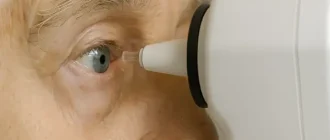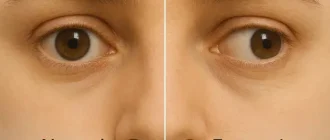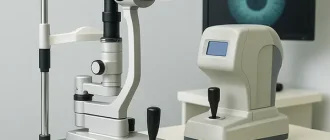Ocular rosacea is a chronic inflammatory condition that affects the eyes, often in conjunction with facial rosacea. It can cause discomfort, redness, and vision problems if left untreated.
Which Demographic Groups Are More Prone to Ocular Rosacea?
| Demographic Group | Prevalence (%) |
|---|---|
| Adults (30-60 years) | 85% |
| Women | 75% |
| Fair-skinned Individuals | 70% |
| People with a Family History | 60% |
| Men (Severe Cases) | 50% |
This chart highlights the demographic groups most affected by ocular rosacea, with adults aged 30-60 and women being the most commonly impacted.
What is Ocular Rosacea?
Ocular rosacea is an extension of rosacea that affects the eyes, leading to irritation and inflammation of the eyelids and conjunctiva. Many patients with this condition also have facial rosacea, but it can occur independently.
Common Symptoms of Ocular Rosacea
The symptoms of ocular rosacea can range from mild to severe and may include:
- Persistent eye redness
- Burning or stinging sensations
- Dryness and sensitivity to light
- Gritty feeling, as if something is in the eye
- Eyelid inflammation (blepharitis)
- Frequent styes
- Blurred vision or watery eyes
Symptoms can flare up periodically, much like facial rosacea, making early diagnosis and management crucial.
What Causes Ocular Rosacea?
The exact cause of ocular rosacea is still not fully understood, but researchers believe it is linked to:
- Dysfunction of the Meibomian glands, which produce oil that prevents tear evaporation.
- Demodex mites, microscopic organisms found on the skin that can trigger inflammation.
- Chronic inflammation due to an overactive immune response.
- Environmental factors, such as extreme temperatures, wind, and sun exposure.
- Dietary triggers, including spicy foods, caffeine, and alcohol.
Who is at Risk?
Ocular rosacea is most commonly diagnosed in:
- Adults between the ages of 30 and 60
- People with fair skin who blush easily
- Those with a family history of rosacea
- Women, though men may experience more severe symptoms
Potential Complications of Untreated Ocular Rosacea
| Complication | Risk Level (%) |
|---|---|
| Chronic Dry Eye | 85% |
| Corneal Damage | 75% |
| Severe Blepharitis | 70% |
| Vision Impairment | 65% |
| Eye Infections | 50% |
This chart highlights the potential complications of untreated ocular rosacea, with chronic dry eye and corneal damage being the most common risks.
Best Treatment Options for Ocular Rosacea
While there is no cure for ocular rosacea, effective treatment strategies can help manage symptoms and prevent complications.
1. Prescription Medications
- Oral antibiotics (such as doxycycline or minocycline) help control inflammation.
- Topical antibiotics (like metronidazole or azithromycin) reduce bacterial overgrowth on the eyelids.
- Anti-inflammatory eye drops (cyclosporine or steroid-based drops) provide relief from redness and irritation.
2. Eyelid Hygiene and Home Care
- Warm compresses help unclog Meibomian glands and improve tear quality.
- Gentle eyelid scrubs using diluted baby shampoo or over-the-counter eyelid cleansers keep the area clean.
- Artificial tears (preservative-free) relieve dryness and irritation.
3. Lifestyle Adjustments
- Avoid common triggers, including spicy foods, extreme temperatures, and alcohol.
- Wear UV-protective sunglasses to reduce sun-induced flare-ups.
- Stay hydrated and maintain a healthy diet rich in omega-3 fatty acids (found in fish and flaxseed).
Effectiveness of Treatment Methods for Ocular Rosacea
| Treatment Method | Effectiveness (%) |
|---|---|
| Oral Antibiotics (Doxycycline) | 85% |
| Artificial Tears | 75% |
| Eyelid Hygiene (Warm Compresses) | 70% |
| Topical Antibiotics (Metronidazole) | 65% |
| Steroid Eye Drops | 50% |
This chart highlights the effectiveness of various treatments for ocular rosacea, with oral antibiotics and artificial tears being among the most effective options.
When to See a Doctor
If you experience persistent eye irritation, worsening vision, or frequent styes, it’s essential to seek medical attention. Early intervention can prevent long-term complications such as corneal damage and chronic dry eye syndrome.
Editorial Advice
Ocular rosacea is often overlooked, but managing it effectively can significantly improve your quality of life. Keeping up with good eyelid hygiene, identifying triggers, and following a doctor’s recommendations are the keys to controlling symptoms. If your eyes frequently feel dry or irritated, don’t ignore them—your vision is worth protecting!





